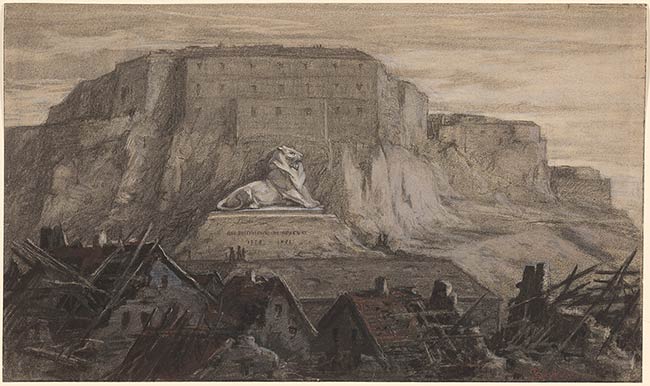
Bartholdi was born in Colmar, an Alsatian town along the border with Germany. He traveled to Egypt as a photographer after the Napoleonic occupation, and the sight of ancient monumental sculpture deeply impressed him. As France entered the war against Prussia and Germany in 1870, Bartholdi led a local regiment to defend his hometown, but they and France ultimately surrendered, and Germany annexed Colmar. However, he received a commission from nearby Belfort to produce a monumental sculpture celebrating their resistance in 1872. He rejected the site initially proposed by the town and instead chose a more dramatic natural site. As he wrote to the mayor of Belfort, the lion would be situated at the base of "the grandiose rock that dominates Belfort and gives it altogether its exceptional nature."
The project unfolded over the years as funding was raised for its completion. Bartholdi produced many drawings and maquettes, made revisions, and even installed a life-sized painting on the site in September 1873. This dramatic gouache was made toward the end of the design process and reflects the anticipated appearance of the monumental sculpture. By 1875, the fund closed, and the design was final. The sandstone blocks were cut in the summer of 1876 and installed on a pedestal along the cliffside. A reduced version cast in bronze was created in 1879 and installed at the place Denfert-Rochereau in Paris.
Not long after the Belfort commission, Bartholdi left France to make his fortune in America, where he worked to advance his idea for a monumental female figure symbolizing the relationship between the two countries for the entrance to New York's harbor. The Statue of Liberty was completed in 1886.
Signed and dated in red chalk, at lower right corner, "Bartholdi 1874".
